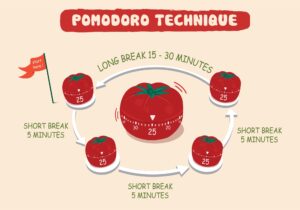In today’s fast-paced world, where productivity is highly valued and stress levels are on the rise, finding effective ways to recharge and stay focused has become more crucial than ever. Do you always feel confused and unconcentrated in the afternoon? Have you ever tried to take a nap but ended up feeling groggy, flustered, or even unable to sleep at night?
Napping during a busy, tiring day is an underrated but powerful solution that has gained recognition. Napping during the day is a great way to recharge your energy, improve your mood, and boost your productivity. However, not all naps are created equal and may result in uncomfortable feelings.
To get the most out of your nap, you need to follow some simple tips or use smart tools, like a smartwatch, to help you optimize your nap time and wake up refreshed and alert. Let’s first understand what a power nap is.
What Is a Power Nap?
Sleep consists of different stages, including light sleep, deep sleep, and REM (Rapid Eye Movement) sleep. A power nap, or energy nap, is a short and refreshing nap that typically lasts 10 to 20 minutes, helping keep you in a light sleep stage without entering a deep sleep cycle. This helps prevent sleep inertia and drowsiness caused by long naps, making it easier for you to wake up feeling refreshed.
Benefits of a Power Nap
The concept of power napping has gained popularity as a practical and efficient way to combat fatigue, enhance productivity, and improve overall well-being. Many people incorporate energy naps into their daily routines to help stay alert and focused, especially during periods of the day when energy levels naturally dip, such as the mid-afternoon. The benefits of power napping are often related to your physical and mental well-being:
- Recharge energy
- Reduce fatigue and stress
- Elevate mood and creativity
- Better memory and performance
- Improve alertness and concentration
Best Time to Take a Power Nap
Naps are typically taken during the day, usually in the early afternoon. The best time to nap is between 1 p.m. and 3 p.m., when your body’s circadian rhythm naturally declines and you feel sleepy. Napping later than this time may disrupt your night’s sleep and cause insomnia, while napping earlier than this time may not be as effective as you may not be tired enough to fall asleep quickly.
Ideal Duration of a Power Nap
The ideal power nap duration is between 10 and 20 minutes, or 90 minutes if you need to make up for lost sleep. A quick nap of 10-20 minutes is enough to enter the first stage of non-rapid eye movement (NREM) sleep, which is associated with relaxation, reduced stress, and enhanced alertness.
It’s worth noting that the ideal power nap duration may vary from person to person, and finding the right balance is key to maximizing the benefits. You can adopt a smartwatch as a napping tool to help optimize your nap time by tracking your sleep stages and waking you up at the optimal time. A smartwatch with sleep-tracking features can also provide insights into your sleep patterns, helping you understand when you get the most restful sleep.
If you nap for longer than the appropriate amount of time, you may enter a sleep inertia which can last 30 minutes or longer. It makes you harder to wake up from and possibly leaves you feeling groggy, disoriented, or sluggish.
How to Take an Effective Power Nap?
Here are 6 proven tips to help you get a refreshing 20-minute nap:
1. Keep it short:
Limit your nap duration to 10-20 minutes. A quick nap can help you stay in the light sleep stage and avoid being groggy.
2. Time it right:
Take a nap in the early afternoon between 1 p.m. to 3 p.m. Better yet, use smart tools to find the sleep mode that works best for you, such as a sleep tracker or a smartwatch with sleep-tracking features.
3. Make it comfortable:
Find a quiet, comfortable space where you can relax without disturbances. Consider using an eye mask or earplugs to block out light and noise.
4. Relax your mind:
Avoid screens, take deep breaths, meditate, or visualize to calm yourself down and prepare for sleep.
5. Set an alarm:
Use a smartwatch or napping app to wake you up at the optimal time, avoiding oversleeping and sleep inertia.
6. Refresh yourself:
Wake up gradually, do some light exercise like stretching, drink some water, or get some sunshine to rejuvenate yourself.
Napping is incredibly powerful and can enhance your well-being, performance, and health. By following these 6 proven tips, you can achieve a refreshing 20-minute nap that will leave you feeling energized, focused, and happy. Incorporating a smartwatch into your power nap routine can make a significant difference in your energy levels and productivity. Take advantage of your smartwatch and fitness band to experience the positive impact of power naps on your performance and mood.



